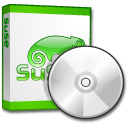

In this last week of August, much has happened mainly because of Hack Week. Here is a quick rundown.
We now have founded an openSUSE Election Committee consisting of:
* Claes Backstrom (Community) * Andrew Wafaa (Community) * Marko Jung (Novell) * Vincent Untz (Novell, deputy)
South Africa’s Stellenbosch University now has a high-performance Sun Fire cluster running OpenSuse Linux, courtesy of Breakpoint Solutions.
See the openSUSE Project at the Utah Open Source Conference this week!
The Utah Open Source Conference is going on August 28 through August 30 at the Salt Lake Community College.
[...]
As part of Hack Week, we’ll also have a room set aside for Hack Week III participants, so you can watch the hacking in real time.
Here is an idea, build OLPC XO’s Sugar interface for openSUSE this hackweek.
What is Sugar?
* Sugar graphical user interface, written in Python, on top of the X Window System and the Matchbox Window Manager. o Designed specifically for collaboration of users through network sharing of user activities (method calls and signals); o “Zooming” interface to network connectivity “spheres” (local, collaborators, neighborhood); o Journal interface to storage of events, activities, objects (files)
My goal for this hackweek is to unify them as much as possible. So, now I have something to show. The prototype works on openSUSE 11.0 Alpha2 and unifies steps 1-3.
Don't be like that. Don't discount ex-Novell-employees, their experience or capability, or Novell products just because Novell's management isn't being held responsible for better performance standards. Not only is it not the fault of the individual contributors, it simply is not accurate.
Today, I completed my download of openSUSE 11.0 (after my recent Vista failure) and set about installing it. It was a DVD of the latest ISO from openSUSE. My machine is the same Acer Ferrari 5000 (2.0 GHz X2 AMD Turion 64, 2GB RAM, ATI X1600 Mobility Radeon).
Except for the still touchy subject of the Microsoft deal, I’d recommend Novell to someone who was new to Linux but ready to learn. It doesn’t have the same hand-hold style of Ubuntu, so that’s still my top choice. Right now it’s really almost a tie between recommending Mandriva and openSuse as the next best thing after Ubuntu.
SUSE has been around almost since the dawn of consumer-level desktop Linux, and openSUSE 11 upholds the SUSE reputation for having not just a wide range of available applications, but also excellent documentation and a fine user-to-user support community. For this video we chose the KDE 4.x desktop option. KDE 3.5x and GNOME are also available as defaults in openSUSE.
SaX (also referred to as SaX) is the X configuration tool for SUSE Linux. It runs for the first time during the initial SUSE Linux installation, where it identifies your graphics card, installs the graphics drivers, and sets up X to its default configuration. The settings are stored in the /etc/X11/XF86Config file. You can edit this file manually, but that would be unnecessary risky behavior.
When you first install SUSE Linux, YaST will recommend installing just the KDE desktop. You can choose to install GNOME instead, or install both if you have enough disk space.
Beginning with openSUSE 11.1, SUSE users will have an additional option regarding security frameworks. In addition to AppArmor, we will be adding SELinux capabilities in openSUSE 11.1, which will allow users to enable SELinux in openSUSE if they wish.
In this week:
* Hack Week III * openSUSE Election Committee Founded * openSUSE at Utah Open Source Conference * T&T: Accelerate your build speed with Icecream * linux.com: A video tour of openSUSE 11 (with KDE 4 desktop)